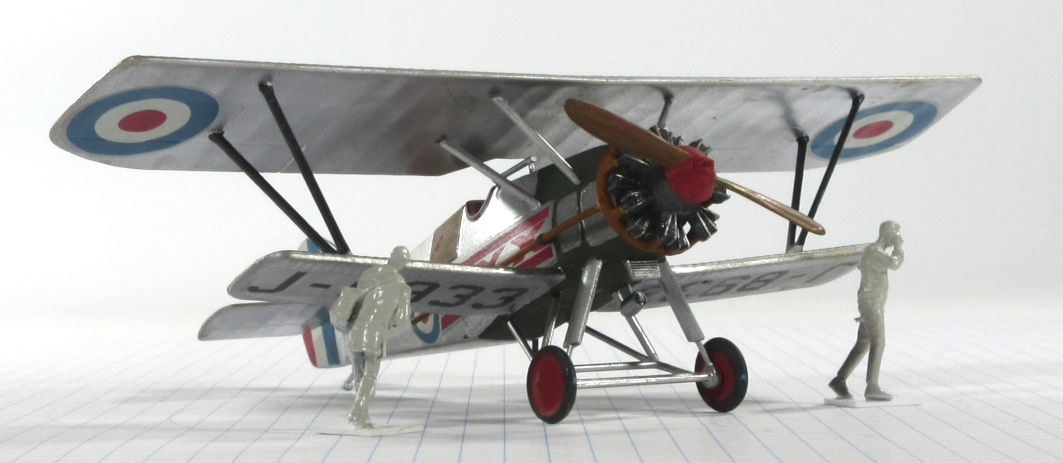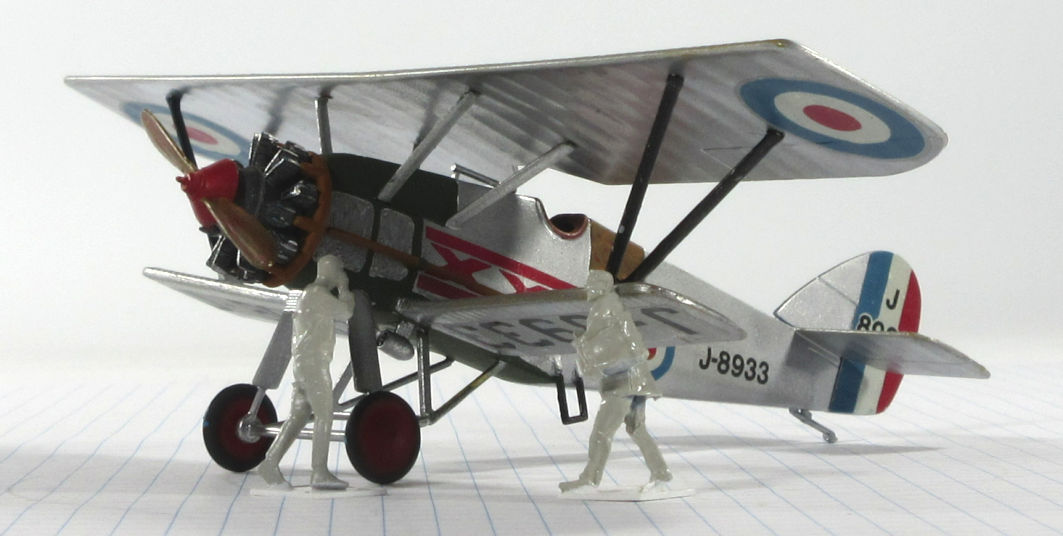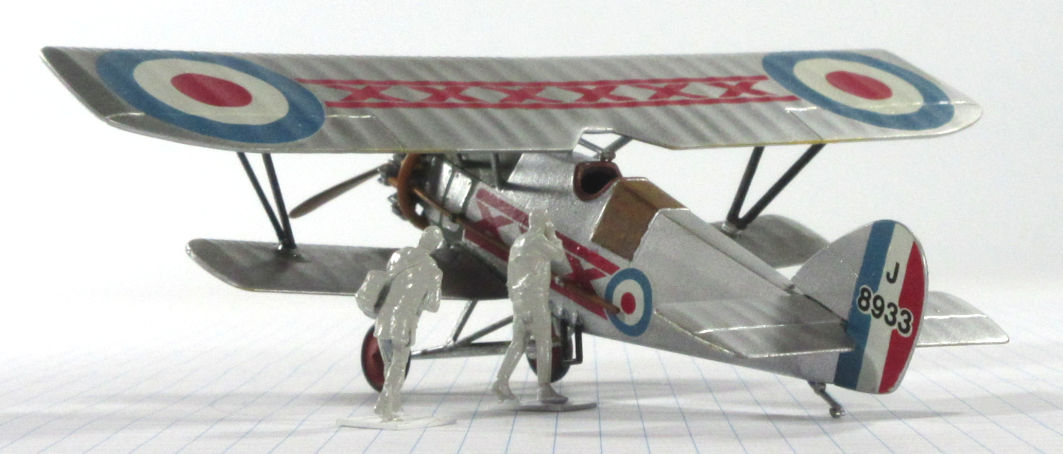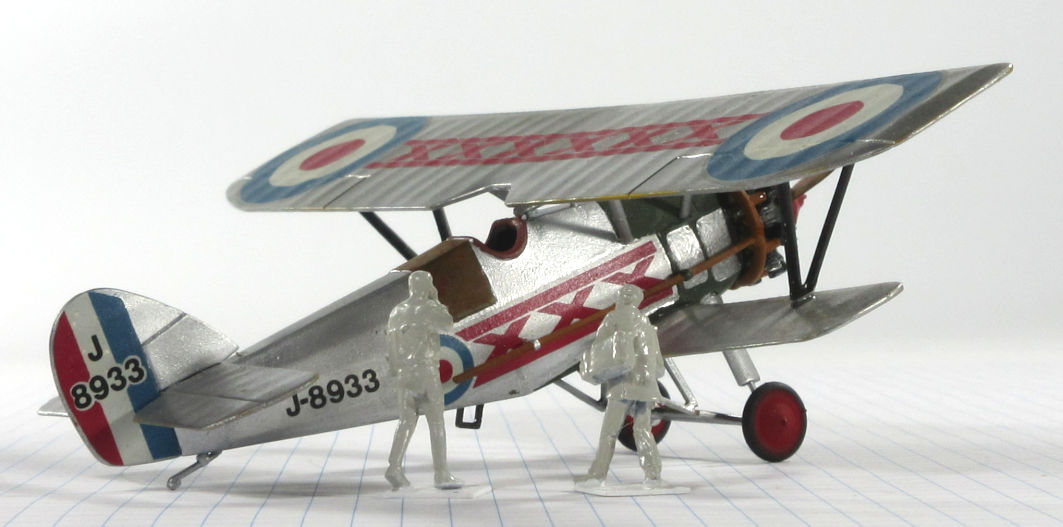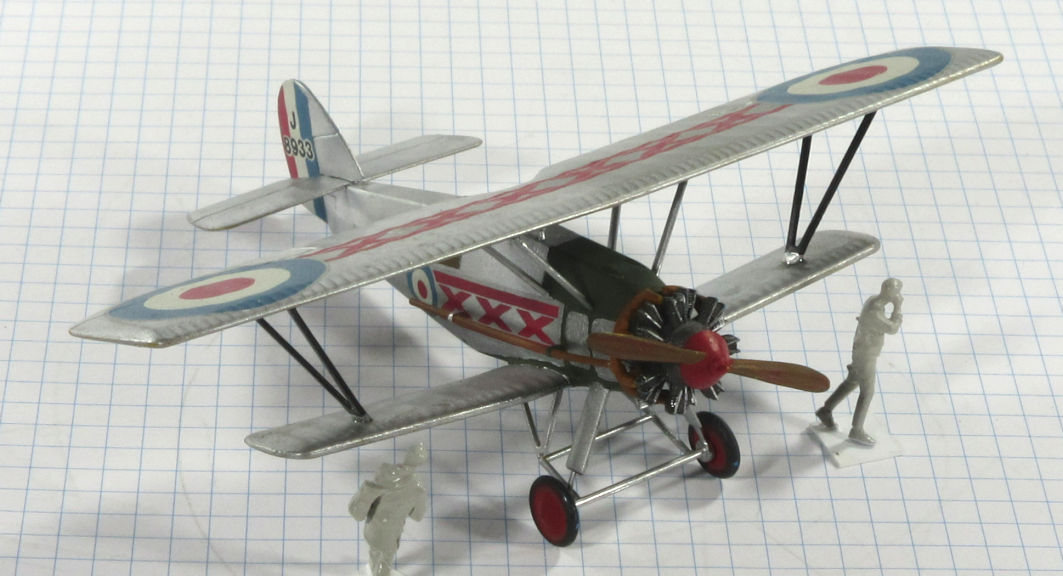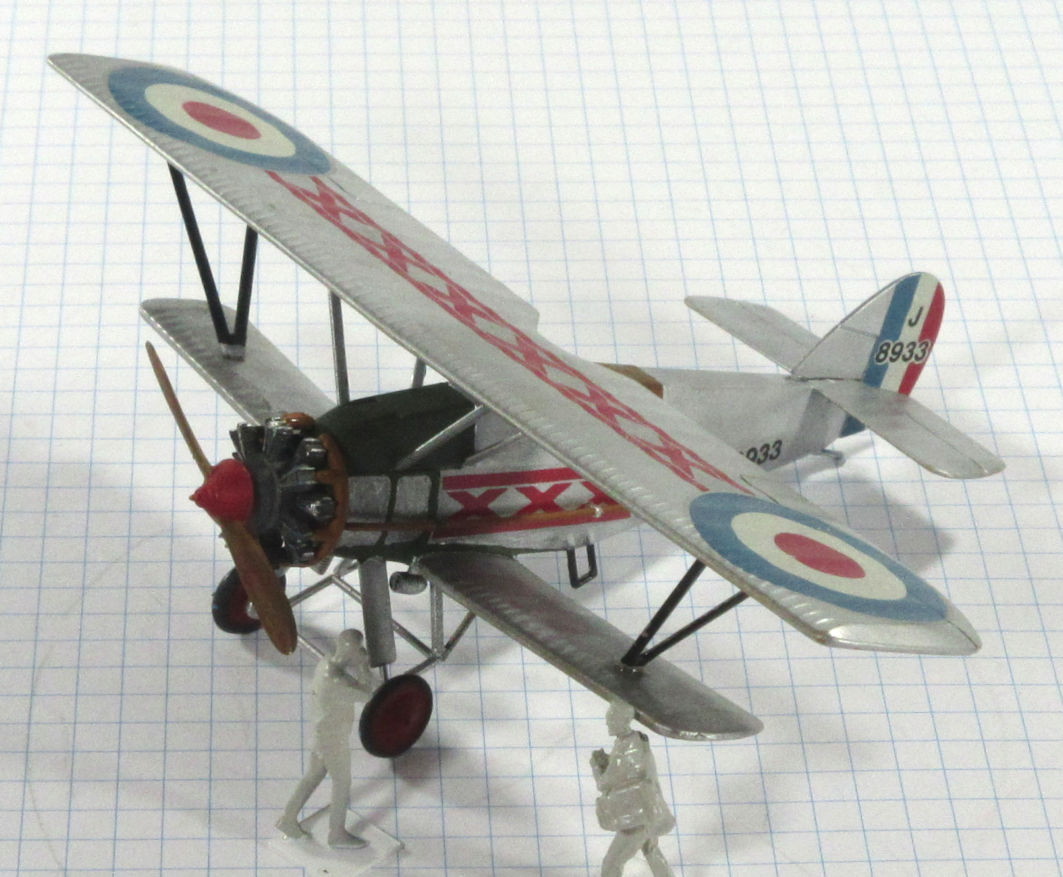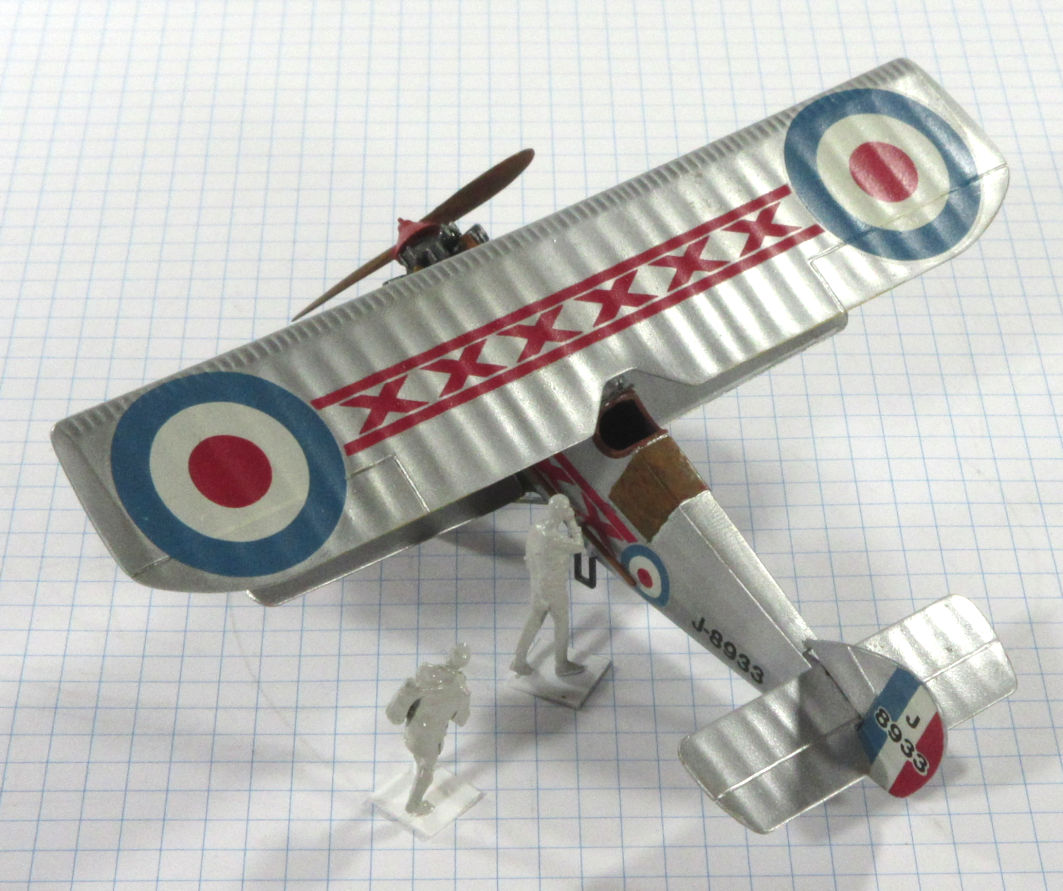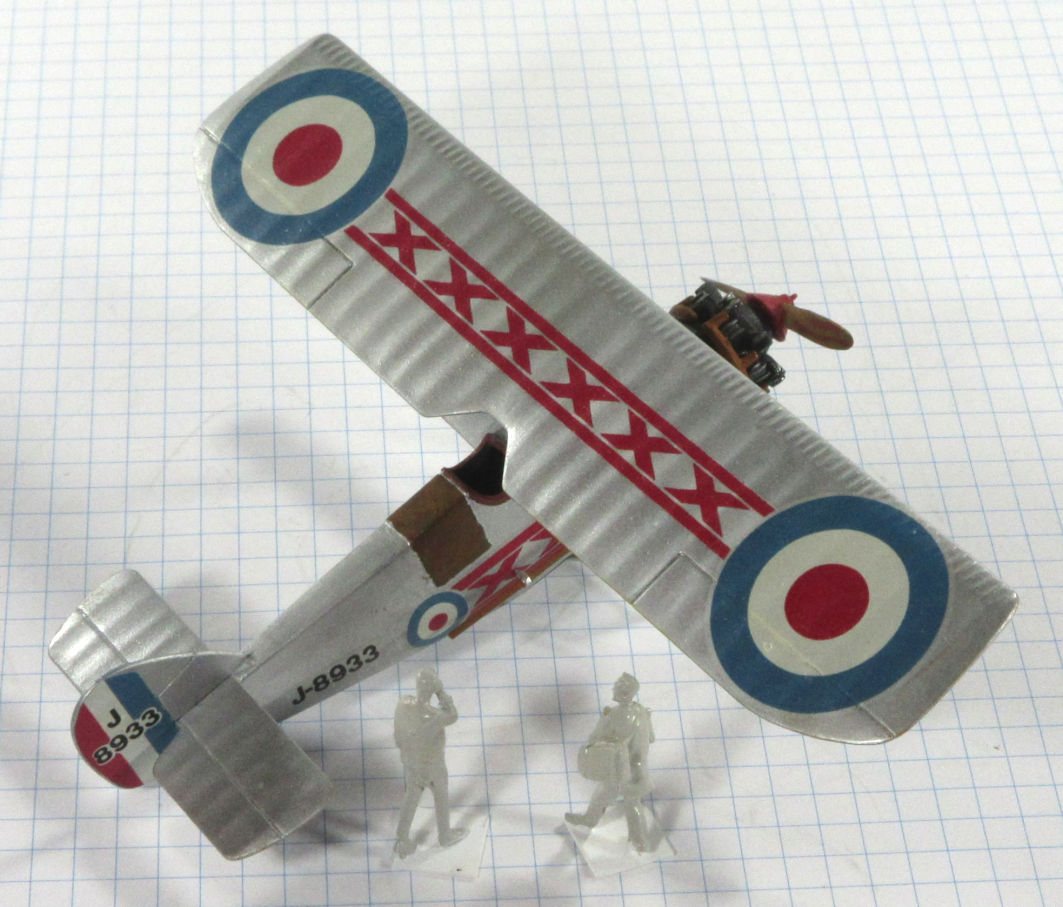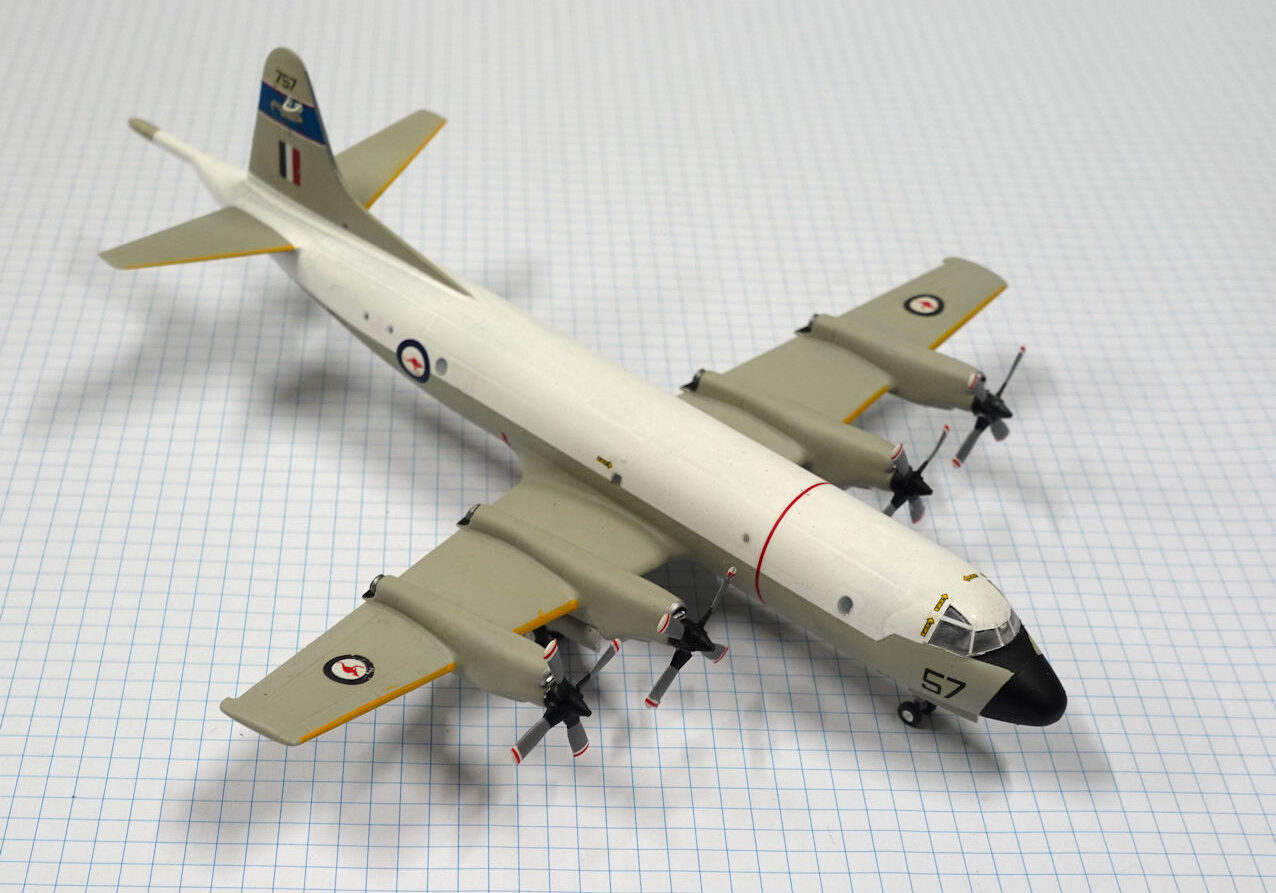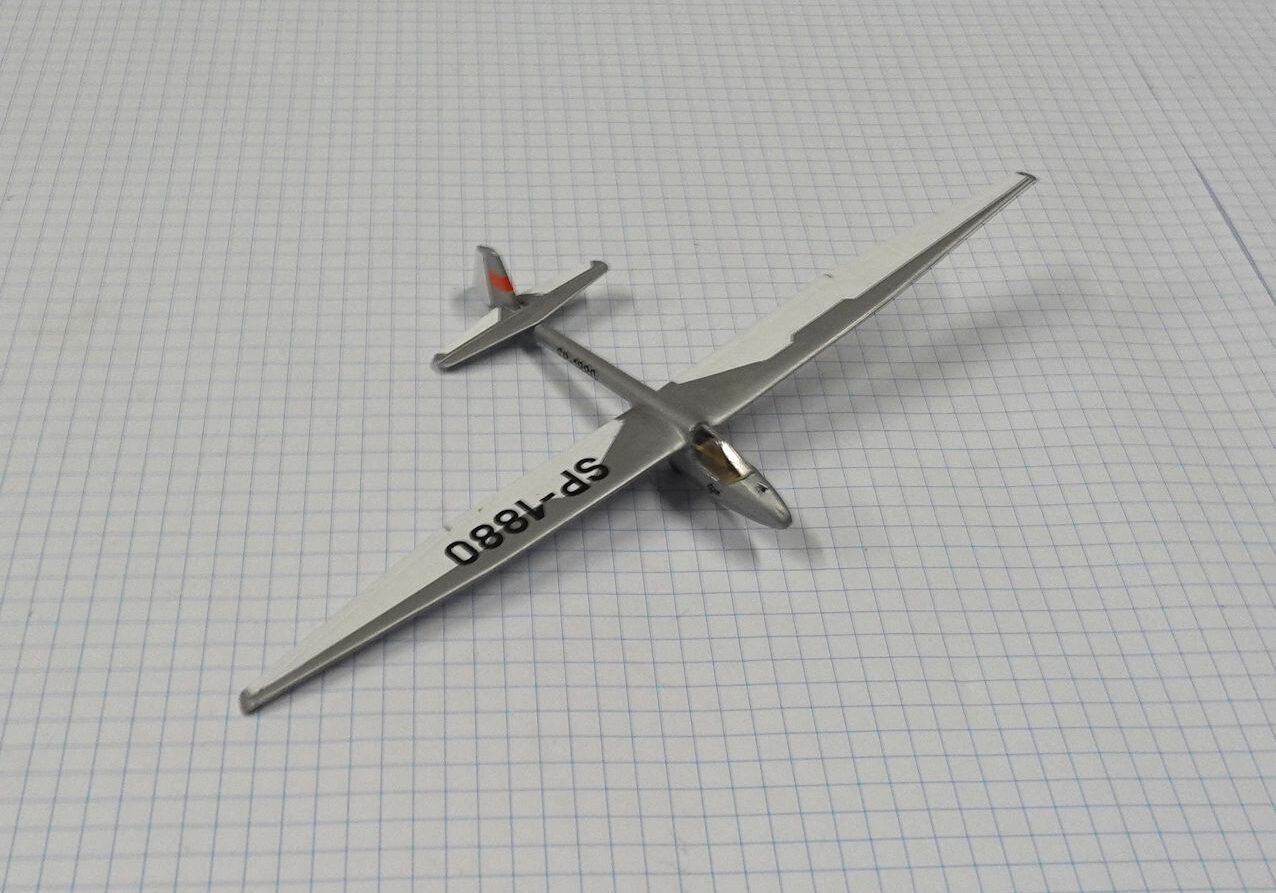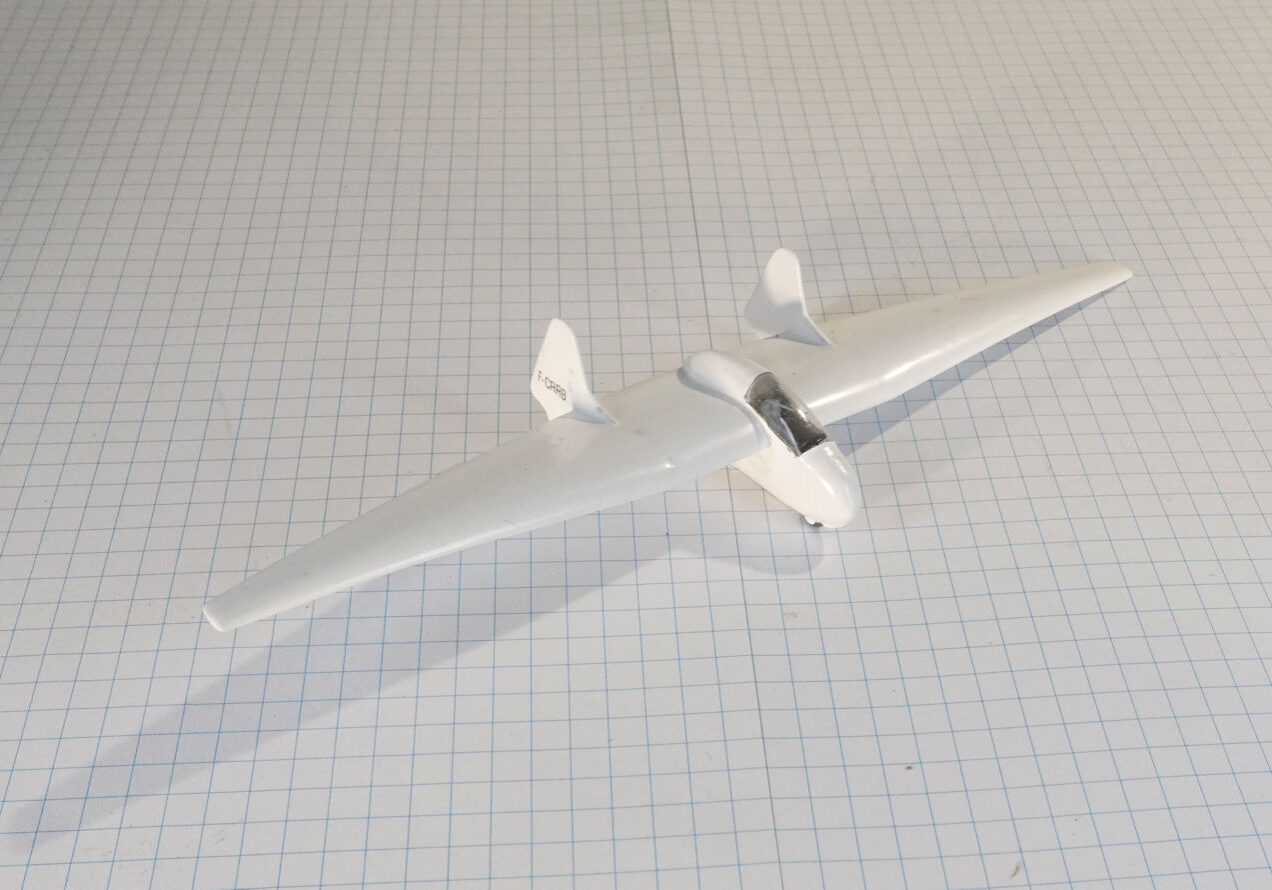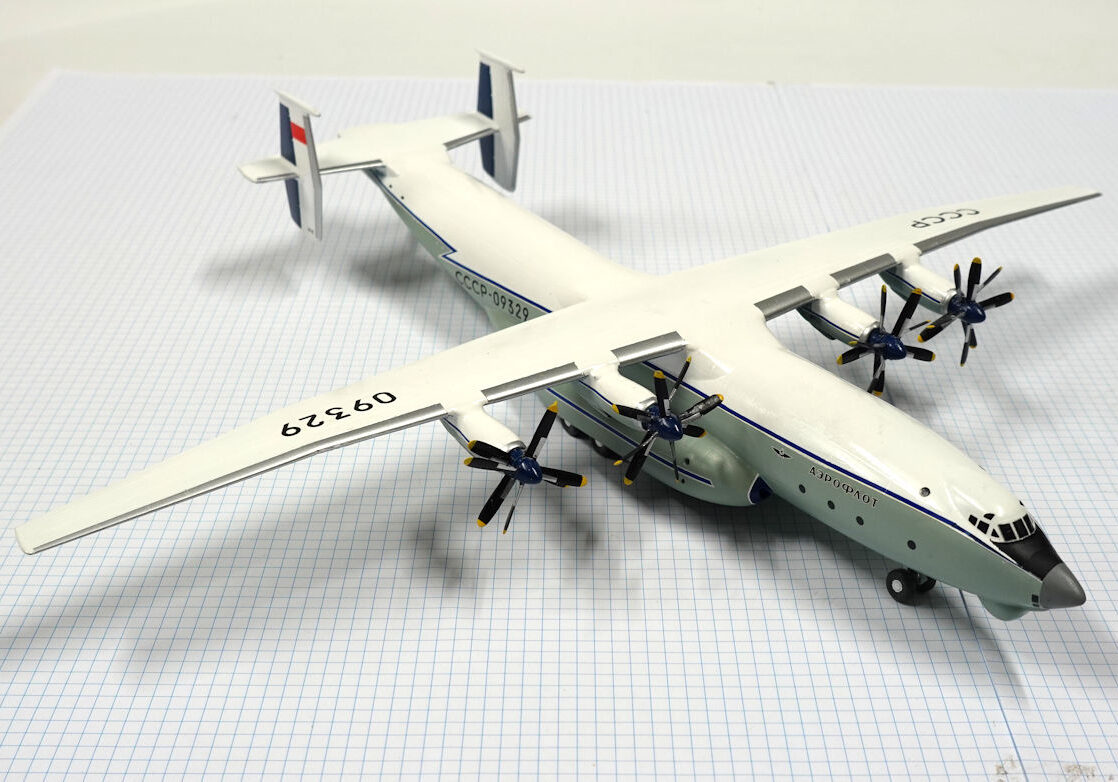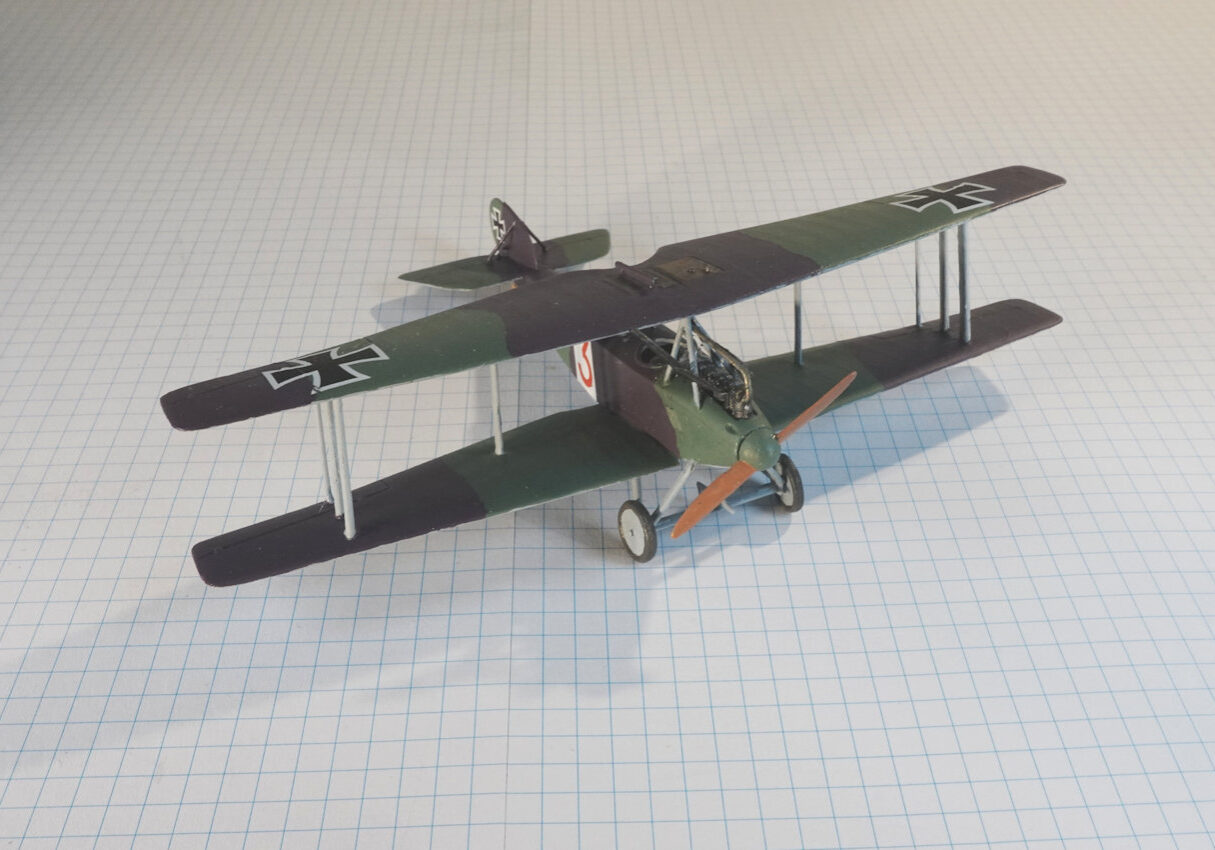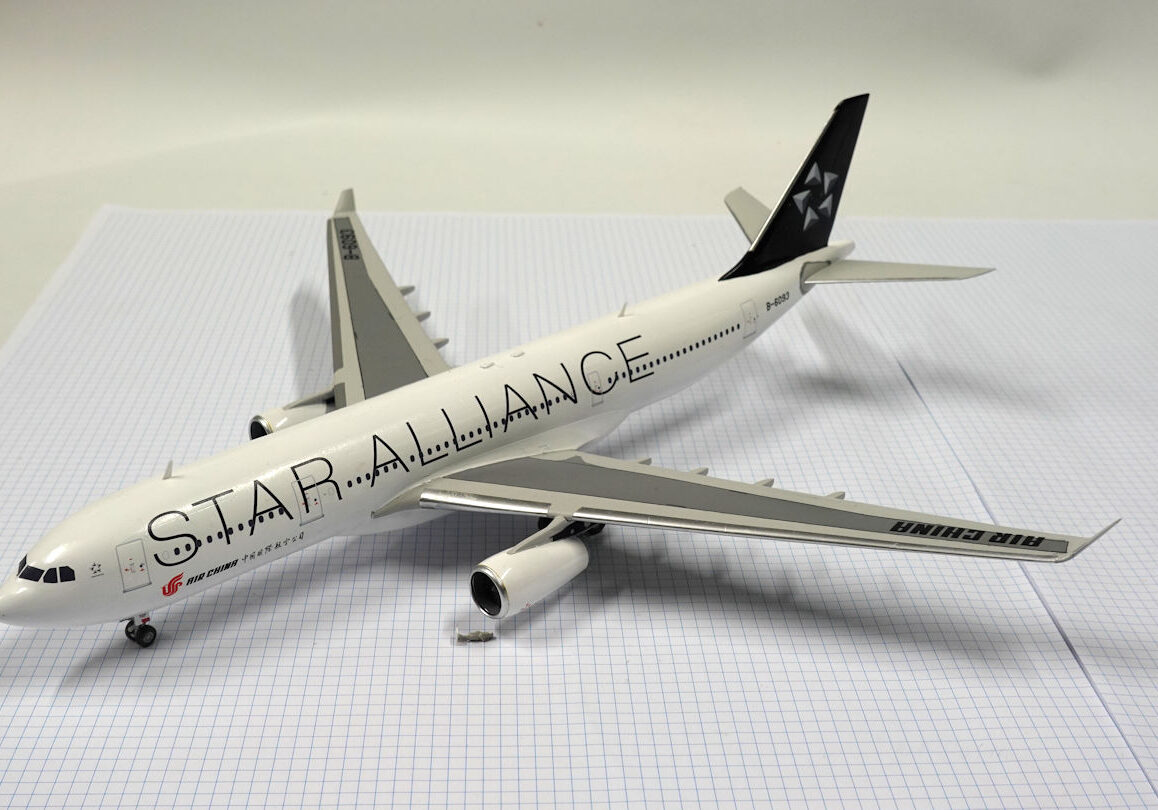History
The Armstrong Whitworth Siskin IIIA was an all-metal fighter developed through several stages to become the Royal Air Force’s main front line fighter for most of the 1920s.
Planning of the Siskin began in 1919 and the first one flew in March 1921.
The Air Ministry’s new policy of ordering only all-metal aeroplanes forced a redesign of the Siskin and the first all-metal Siskin III flew in May 1923.
The Siskin III began flying for the RAF in May 1924 and a total of 465 Siskins were manufactured.
The first Siskin IIIA, fitted with the Jaguar IV engine that gave considerably superior performance, flew for the first time in October 1925 and began entering service in September 1928.
Subsequently 387 were built for the RAF. They began disappearing from service in the RAF around 1932.
This model represent a production aircraft.
Matchbox 1/72 kit completed by Leigh Edmonds in 1974.
